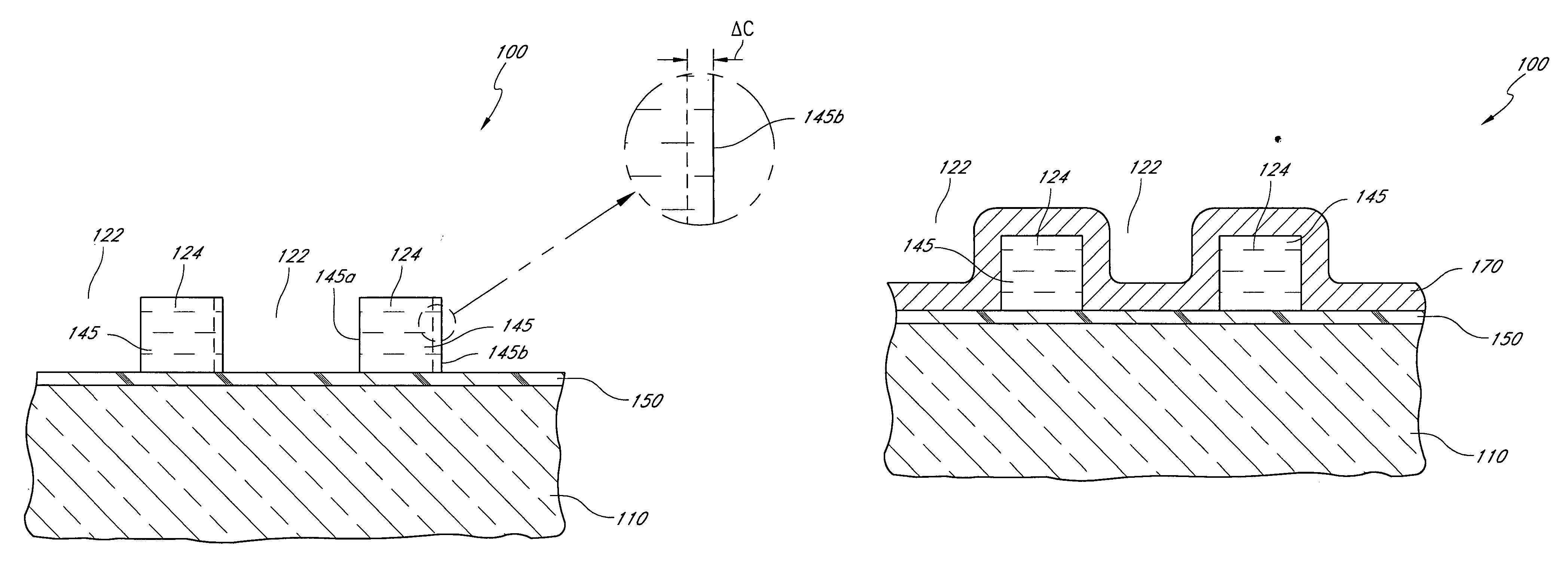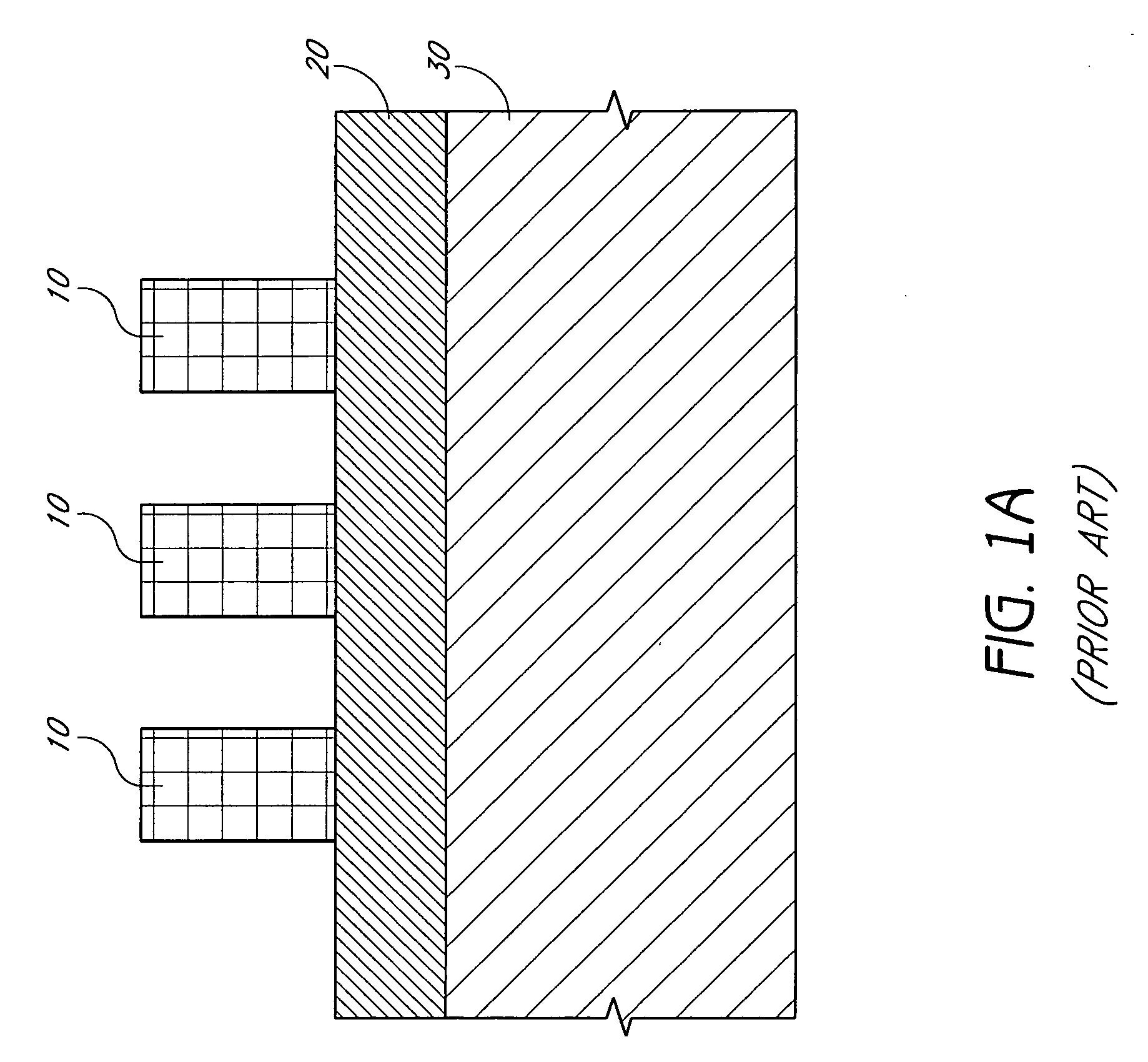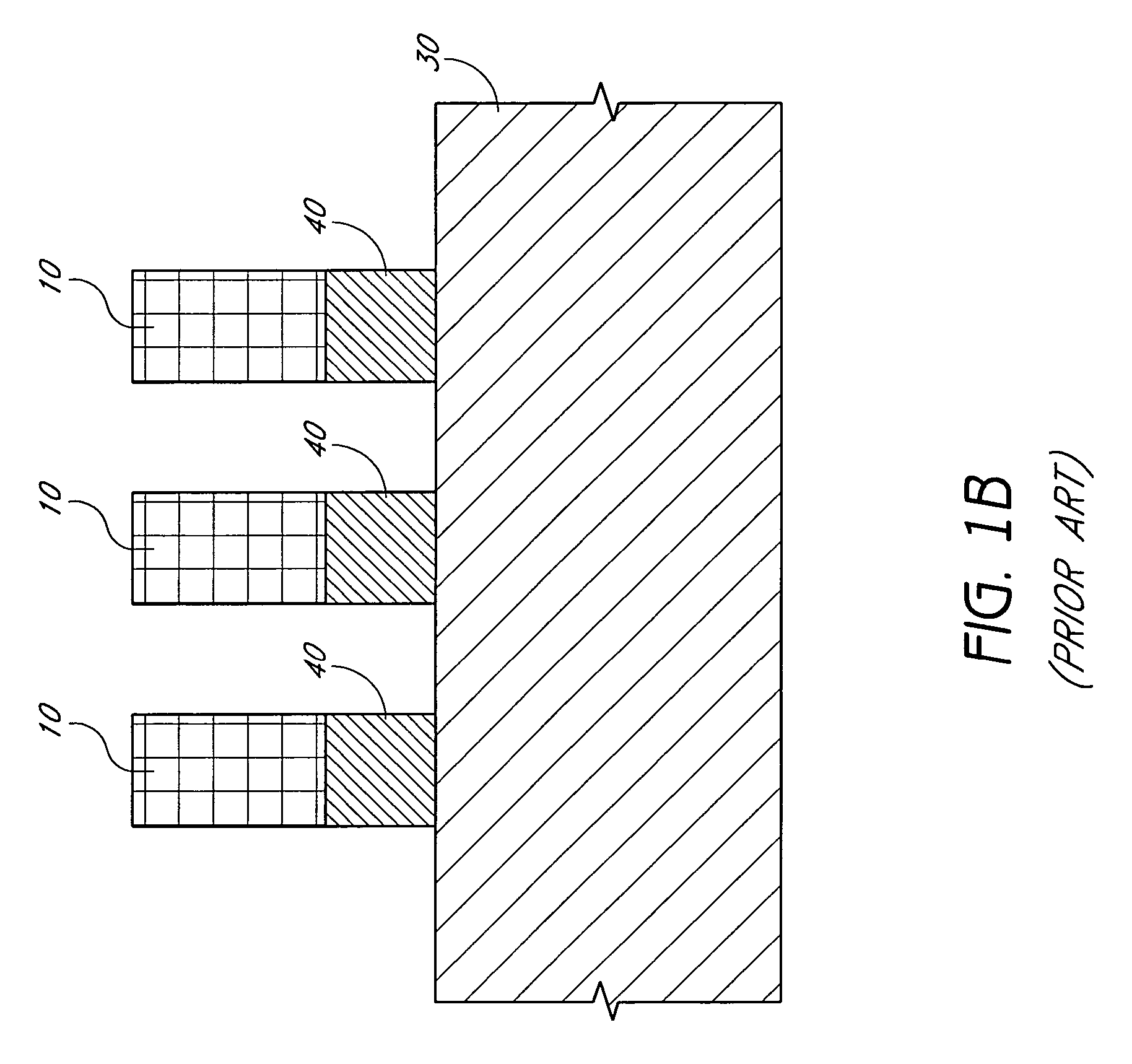Method and apparatus for adjusting feature size and position
a technology of feature size and position, applied in the field of masking techniques, can solve the problems of reducing the reducing the minimum pitch of a particular photolithographic technique, and reducing the size of features
- Summary
- Abstract
- Description
- Claims
- Application Information
AI Technical Summary
Benefits of technology
Problems solved by technology
Method used
Image
Examples
Embodiment Construction
[0045] Due to the continuing trend to decrease feature sizes, lower wavelength photolithographic techniques may be used to pattern photoresist to define features used in pitch multiplication. In addition, these techniques may be pushed near their resolution limits to form ever smaller features, such as the mandrels used in pitch multiplication. At the resolution limits, however, the margins of error for forming features of a desired, or target, size increase; variations in the critical dimensions of features formed by photolithography increase as the resolution limits are approached. For example, 100 nm features can be formed with a variation of about ±15 nm, 200 nm features with a variation of about ±10 nm and 300 nm features with a variation of about ±7 nm. The larger margins of error in photoresist feature sizes lead to larger variations in mandrel size. As a result, the above-described problems with pitch regularity are exacerbated by attempts to define ever smaller features by ...
PUM
 Login to View More
Login to View More Abstract
Description
Claims
Application Information
 Login to View More
Login to View More - R&D
- Intellectual Property
- Life Sciences
- Materials
- Tech Scout
- Unparalleled Data Quality
- Higher Quality Content
- 60% Fewer Hallucinations
Browse by: Latest US Patents, China's latest patents, Technical Efficacy Thesaurus, Application Domain, Technology Topic, Popular Technical Reports.
© 2025 PatSnap. All rights reserved.Legal|Privacy policy|Modern Slavery Act Transparency Statement|Sitemap|About US| Contact US: help@patsnap.com



